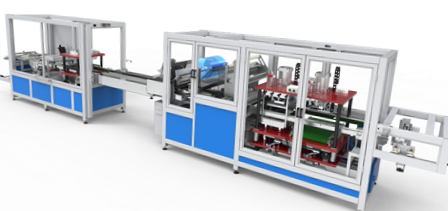Medical bag welding
Frequently asked questions about medical bag welding
What are the different categories of flexible medical pouches?
Flexible medical bags can be classified according to their type of use or mode of application.
The first category concerns blood transfusion bags, which are designed to contain blood products: platelets, plasma, cryoprecipitate, whole blood… Malleable and sterile, this type of rounded-edge container prevents coagulation of the blood product contained.
The second category of containers, widely used by healthcare professionals, is made up of solute bags (chloride, dextrose, glucose, etc.), which are essentially used to infuse sodium chloride or glucose. The aim is to supply various nutrients intravenously, particularly in cases of extracellular dehydration.
The third type of container is the hemodialysis bag, which holds the dialysate. This sodium bicarbonate-based saline solution is used to clean the blood of people suffering from kidney failure by peritoneal dialysis. These medical bags are easy to handle, as they need to be changed every 5 to 10 minutes.
The fourth category of containers are drainage bags, which are used to collect waste products from the human body (blood, urine, stool, etc.). Ostomy bags are used by patients with digestive tract problems.
Finally, the very specific category of medical bags with compartments enables the patient to be perfused with several solutions without them mixing.
What materials are used to manufacture medical bags?
Requiring the use of materials characterized by their flexibility and plasticity, medical pouches are made from thermoplastics.
Polyvinyl chloride is the most widely used material because of its versatility and sensitivity. Moreover, it is not sensitive to the various liquids used in the medical field, making it ideal for the manufacture of blood bags.
Medical pouches can also be made from Polypropylene, although the latter is less practical than Polyvinyl Chloride due to its greater rigidity. Used for specific devices, PP is heat-resistant and non-toxic, easily sterilized and assembled by high-frequency welding.
Finally, Ethyl Vinyl Acetate is gaining in popularity in the medical sector, as a plastic used in the manufacture of medical pouches. This is due to both its elasticity and its high level of transparency.
How are seamless medical pouches assembled?
Medical pouches must be hermetically sealed to avoid a double problem: loss of substance or risks of contamination which would cause the contents to be dereferenced. The absence of seams greatly reduces these risks and facilitates use and closure in a sterile environment.
Pocket welding is the manufacturing method that enables thermoplastic parts to be assembled without the use of seams. High-frequency technology applied by welding machines enables medical pouches to be assembled in compliance with current regulatory standards and the most precise specifications.

What technologies are used in pouch welding machines?
Pouch welding requires the use of technologies that enable the assembly of thermoplastics that expressly comply with the most demanding health and medical standards. These techniques, which are based on the vibration of molecules in the contact zones of the thermoplastic elements to be joined, produce welds that are regular, straight, smooth and highly resistant.
Welding presses for medical bags and sanitary pouches are based on the use of electromagnetic fields created with a sonotrode for ultrasonic welding, and a brass electrode and marble for HF welding.